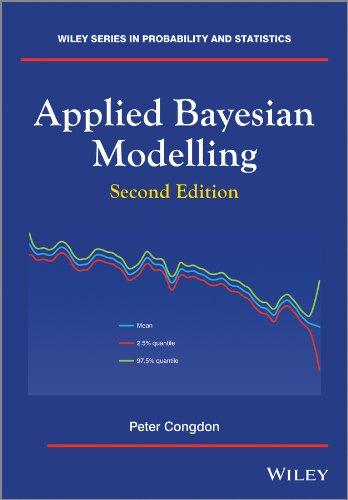Using data on Irish education transitions (http://lib.stat.cmu.edu/datasets/irish.ed) compare logit and probit regression using the augmented data method
Question:
Using data on Irish education transitions (http://lib.stat.cmu.edu/datasets/irish.ed) compare logit and probit regression using the augmented data method and the dbern.aux function. Take \(P=2\) predictors, namely sex and DVRT (Drumcondra Verbal Reasoning Test), with response \(y=0\) if leaving certificate not taken, and \(y=1\) if taken. Specifically obtain the number of subjects with probabilities \(\operatorname{Pr}\left(z_{\text {rep }, i}

Also using the dbern.aux function assess the best subset of predictors (for probit regression only) via the jump.lin.pred function. In this case the basic code omits specifying the eta[] regression term, or a prior on the regression coefficients, though a prior precision on the coefficients (tau.beta) is included as a known input. Thus one has

Step by Step Answer:






